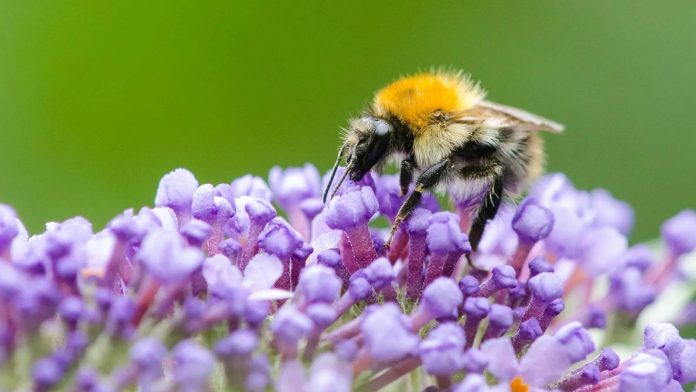Changing climate has produced an evolutionary change in flower types and distribution and bees have responded to the change by developing shorter tongues. Nicole E. Miller-Struttmann with the Biological Sciences Department at State University of New York College at Old Westbury and colleagues from across the United States are the first to show a definite change in the length of bee tongues in response to the shortening of the flowers that the bees seek pollen from.
Mutualism is an evolutionary concept that shows that two species can evolve simultaneously to produce advantages to each species. In colder periods of time, flowers that the bumble bees were most attracted to have longer corolla tubes than the same flowers do at present. The corolla tube is the portion of the flower that the petals grow from. The length of the corolla tubes of the majority of flowers that bees feed on has shortened in response to the higher temperatures produced by climate change. The change has been documented a being variable depending on the altitude of the flowering plant but is considered to be a worldwide phenomenon.
The bees adapted in only 48 years to the changes in the depth of the corolla tube of most flowers in the world. The bees developed shorter tongues to accommodate the shorter flowers. The shortening of bee tongues was documented by the researchers by measuring the length of bee tongues in preserved specimens from 1966 to 2014. Tongue length has decreased in the majority of bumblebee species in the United States by about two millimeters in the last 48 years.















